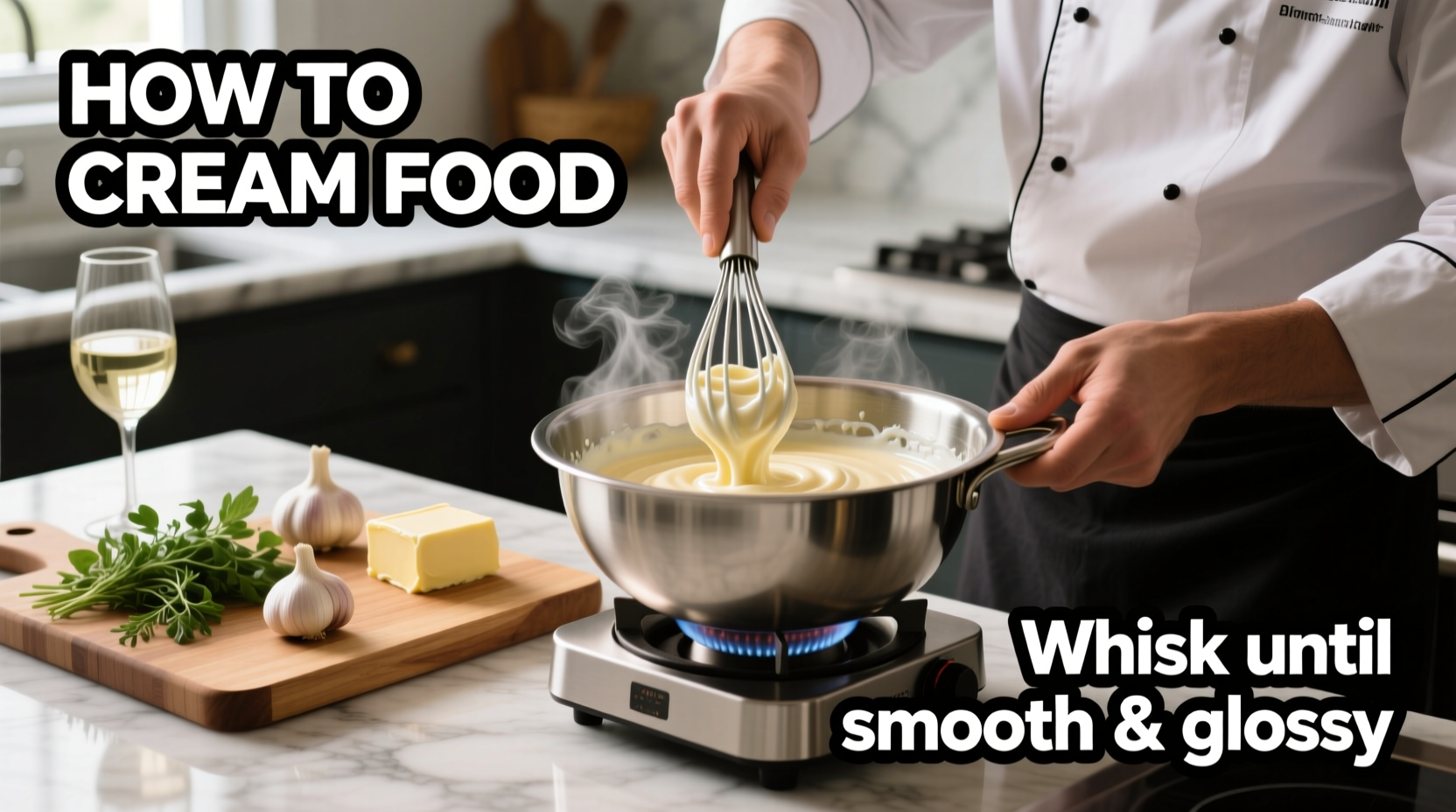Mastering the creaming technique unlocks professional-quality baking results at home. When executed correctly, creaming creates the airy structure that makes cakes rise beautifully and cookies spread perfectly. This guide reveals the science-backed method professional bakers use to achieve consistent, flawless results every time you bake.
The Science Behind Successful Creaming
Creaming works through a precise physical and chemical process. As butter and sugar are beaten together, the sharp edges of sugar crystals cut into the fat, creating microscopic air pockets. Food science research from the Cornell University Food Science Department confirms that these trapped air bubbles expand during baking, providing lift to your baked goods.
| Properly Creamed Mixture | Under-Creamed Mixture | Over-Creamed Mixture |
|---|---|---|
| Pale yellow color | White, dense appearance | Greasy, separated texture |
| Light, fluffy texture | Grainy consistency | Curded appearance |
| Tripled in volume | Minimal volume increase | Reduced volume |
| Stable emulsion | Poor structure | Collapsed structure |
Essential Preparation Steps
Before you begin creaming, proper preparation determines your success. The FDA's Food Safety Guidelines emphasize that ingredient temperature significantly impacts food safety and quality. For optimal creaming:
- Use unsalted butter at 65-70°F (18-21°C) - cool but yielding to gentle pressure
- Cut butter into uniform 1-inch cubes for even softening
- Sift granulated sugar to eliminate lumps
- Ensure all equipment is completely dry
Step-by-Step Creaming Technique
Follow this professional method for perfect results:
- Place cubed butter in mixing bowl and beat on medium-low speed for 30 seconds until smooth
- Gradually add sugar while mixer runs, scraping sides as needed
- Increase speed to medium and beat for 3-5 minutes until pale and fluffy
- Stop mixer and check consistency - properly creamed mixture should hold its shape
- Add eggs one at a time, mixing just until incorporated between additions

Common Mistakes and Solutions
Even experienced bakers encounter creaming challenges. Understanding these context boundaries prevents baking disasters:
- Problem: Butter melts during creaming
Solution: Chill bowl and beaters beforehand; work in cooler environment - Problem: Mixture appears curdled
Solution: Add 1-2 tablespoons of flour to stabilize the emulsion - Problem: Dense final product
Solution: Extend creaming time by 1-2 minutes to incorporate more air
Advanced Creaming Variations
Different recipes require specialized creaming approaches. The American Bakers Association notes that professional kitchens adapt creaming techniques based on desired texture outcomes:
- Light creaming: For delicate cakes - beat 2-3 minutes for subtle lift
- Hard creaming: For chewy cookies - beat 5-7 minutes for maximum spread
- Creaming with alternative fats: When using coconut oil, chill mixture between additions
How Creaming Techniques Have Evolved
The creaming method has transformed significantly over baking history:
- Pre-1900s: Hand-creaming with wooden spoons required 20+ minutes of vigorous beating
- 1920s: Introduction of hand-cranked mixers reduced time to 10-15 minutes
- 1937: KitchenAid stand mixer revolutionized home baking with consistent results
- Modern: Precision temperature control and mixer speed settings optimize air incorporation
When Creaming Matters Most
Not all recipes require traditional creaming. Understanding these context boundaries saves time and ensures proper texture:
- Essential for: Butter cakes, cookies, and muffins requiring significant rise
- Modified technique: Pound cakes benefit from extended creaming (7-10 minutes)
- Not required: Quick breads, brownies, and recipes using melted butter
- Critical exception: Always cream when recipe specifies "cream butter and sugar"
Professional Tips for Perfect Results
Implement these chef-tested strategies for consistent success:
- Use a rubber spatula to scrape bowl every 60 seconds during creaming
- Add a pinch of salt to enhance emulsion stability
- Room temperature eggs incorporate better than cold
- Stop mixing immediately when proper consistency is achieved
- For high-altitude baking, reduce creaming time by 30 seconds











 浙公网安备
33010002000092号
浙公网安备
33010002000092号 浙B2-20120091-4
浙B2-20120091-4